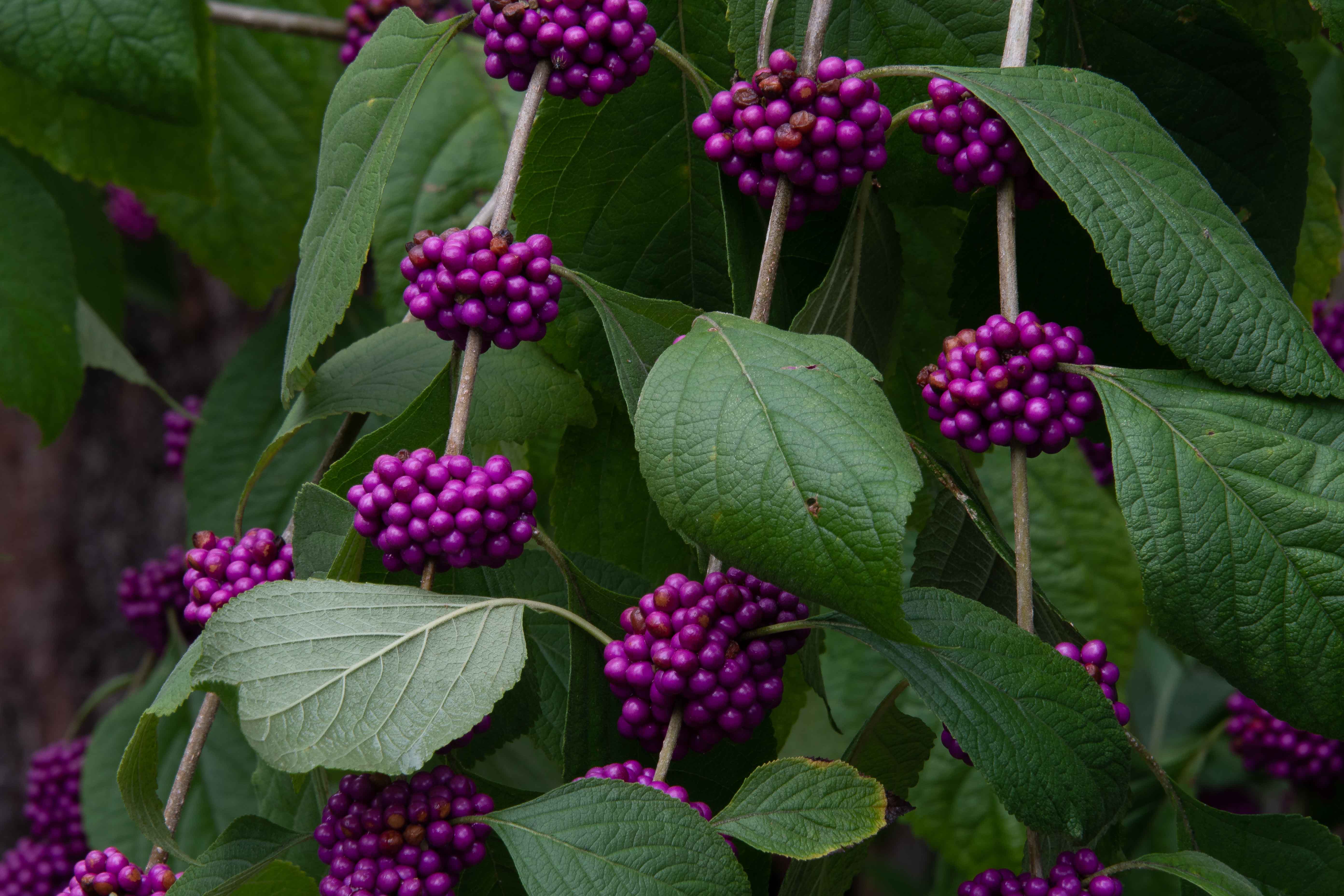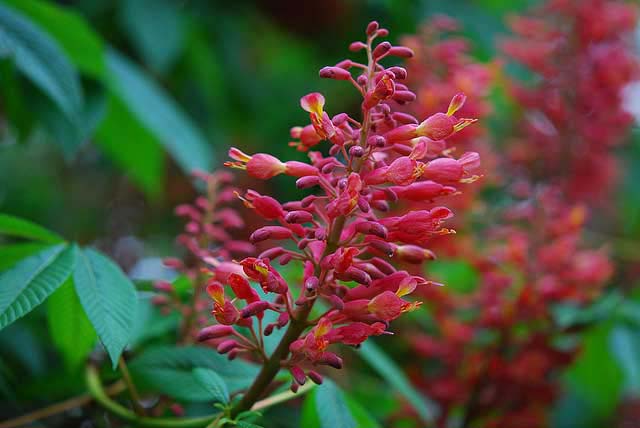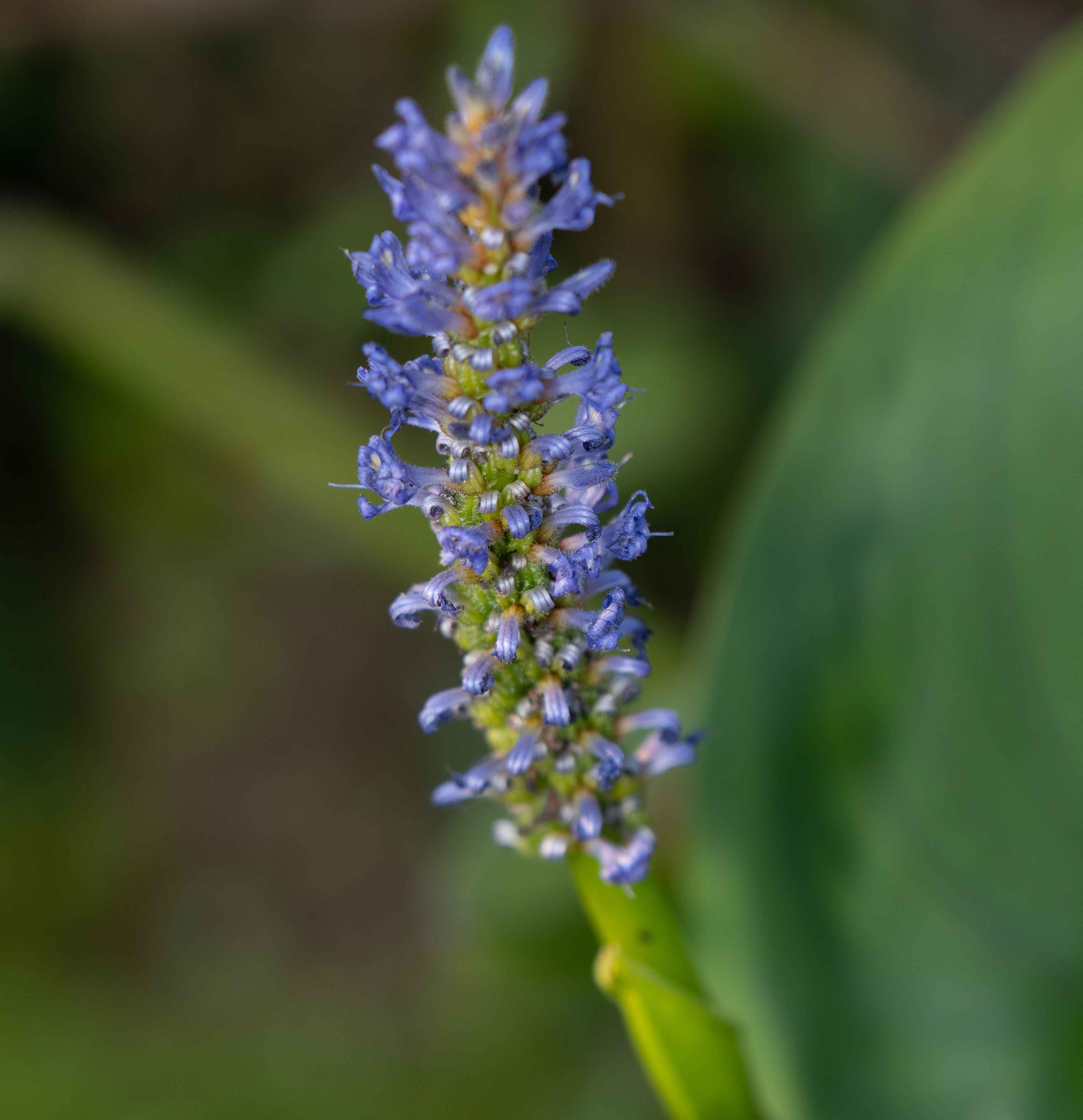Debbie Corbo Talks About Her Favorite Native Plants
Louisiana is home to an array of versatile, forgiving native plants that make great, low maintenance additions to the landscape. With so many from which to choose, it is hard to know where to start. LSU Hilltop Arboretum volunteer Debbie Corbo offers tips on a few of her favorites.
 American Beautyberry (Callicarpa americana) – Any Hilltop plant discussion usually begins with the Beautyberry. It’s the organization’s
signature plant, and there are numerous reasons why. Corbo says as a Louisiana native
Beautyberry is adaptable. It can be found in the St. Francisville hills and along
the edges of fields. While the spring flowers are tiny, the fall berries are dramatic.
Plant breeders have cultivated versions of this native with white, pink or even purple
berries. “It’s a flashy native,” says Corbo. “The real show is in the fall.” That
autumn timing is perfect because those purple berries combined with your favorite
yellow make a great display of Tiger pride.
American Beautyberry (Callicarpa americana) – Any Hilltop plant discussion usually begins with the Beautyberry. It’s the organization’s
signature plant, and there are numerous reasons why. Corbo says as a Louisiana native
Beautyberry is adaptable. It can be found in the St. Francisville hills and along
the edges of fields. While the spring flowers are tiny, the fall berries are dramatic.
Plant breeders have cultivated versions of this native with white, pink or even purple
berries. “It’s a flashy native,” says Corbo. “The real show is in the fall.” That
autumn timing is perfect because those purple berries combined with your favorite
yellow make a great display of Tiger pride. Texas Red Buckeye (Aesculus pavia) – “I love it because it’s the first leaf in the spring,” Corbo says of this deciduous
shrub which is eager to put on an early show in the garden each year. Along with its
new growth, Texas Red Buckeye also unfurls red spike flowers when spring arrives.
Corbo says these fast spreaders are easy to maintain. One important thing to note
– the Buckeye plant drops its leaves in July, but don’t panic. Corbo says the plant
is not dead, it’s simply resting. She recommends planting Texas Red Buckeye near plants
that maintain leaves year-round to avoid that bare look if it’s a concern. What about
that name? Corbo says the plant gets its moniker from the fruit it bears which looks
like the eye of a deer.
Texas Red Buckeye (Aesculus pavia) – “I love it because it’s the first leaf in the spring,” Corbo says of this deciduous
shrub which is eager to put on an early show in the garden each year. Along with its
new growth, Texas Red Buckeye also unfurls red spike flowers when spring arrives.
Corbo says these fast spreaders are easy to maintain. One important thing to note
– the Buckeye plant drops its leaves in July, but don’t panic. Corbo says the plant
is not dead, it’s simply resting. She recommends planting Texas Red Buckeye near plants
that maintain leaves year-round to avoid that bare look if it’s a concern. What about
that name? Corbo says the plant gets its moniker from the fruit it bears which looks
like the eye of a deer. Pickerelweed (Pontederia cordata) – Many yards in the Bayou State are soggy, and the native pickerelweed is right
at home in such conditions. Corbo says pickerelweed is a wetland plant that would
even be happy to live in a water garden or a lake where the plant would benefit the
aquatic residents. “The pickerel fish and others can remain hidden and safe in its
tangles,” she says. Luckily, Louisiana is home to a variety of water-friendly plants.
Corbo says other good native options include the Louisiana Iris and the Swamp Lily.
Pickerelweed (Pontederia cordata) – Many yards in the Bayou State are soggy, and the native pickerelweed is right
at home in such conditions. Corbo says pickerelweed is a wetland plant that would
even be happy to live in a water garden or a lake where the plant would benefit the
aquatic residents. “The pickerel fish and others can remain hidden and safe in its
tangles,” she says. Luckily, Louisiana is home to a variety of water-friendly plants.
Corbo says other good native options include the Louisiana Iris and the Swamp Lily.
It’s a challenge to ask a plant lover to name just a few of his or her favorites, and the same is true of Corbo. In addition to these three, she also recommends the Oak Leaf Hydrangea, which she says is perfect for dried flower arrangements. She says the Oak Leaf can be finicky, so do your research and know ahead of time what conditions it prefers. Corbo also recommends Florida Anise (Illicium floridanum). This large shrub can reach 15 feet tall and is easy to maintain. Corbo warns that the flower has a unique aroma. “The flower stinks,” she says. In keeping with that native Louisiana theme, Corbo recommends the Cypress tree, the Southern Magnolia and native azaleas. A useful tip for cypress growers is to plant the tree in a flower bed to prevent the knees from causing a problem in the lawn. By the way, native azaleas can grow quite large, so give them plenty of space.
Want to spruce up the yard with a Beautyberry or fill in that soggy spot with a pickerelweed? Hilltop will have these native favorites available for purchase at the annual Spring Fling Plant Sale. Mark your calendar now!
Saturday, April 17, 2021
9:00am - 4:00pm
Look for the “Certified Native” markers in the pots or on the tables. In addition, each plant’s label will include whether the plant is native or introduced to the area.
Do you have a favorite native plant? We’d love to hear about it. Share your thoughts via email at hilltop@lsu.edu.